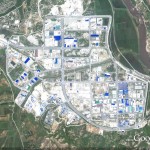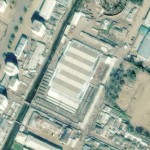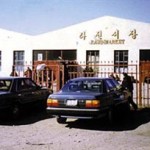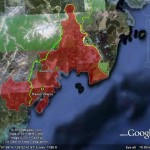Institute for Far Eastern Studies (IFES)
2011-10-5
Dai Yulin, secretary of the Dandong Committee of the Communist Party of China, said in his interview with the China Daily on September 28 that concrete plans for the joint development projects between China and North Korea in the Hwanggumpyong and Rajin-Sonbong regions will be announced at the end of the year.
This past June, Dai stated both countries agreement to jointly develop Hwanggumpyong and Rajin-Sonbong as an economic development zone and reported smooth progress in its plans.
According to Secretary Dai, “The joint management committee between China and North Korea has already been formed to promote the Hamggumpyong development project. Both countries are getting up steam to advance the project.”
In addition Dai explained, “China has secured 10 square kilometers of national land to be used to support the joint development of Hamggumpyong.” He also added, “A think tank comprised of 72 experts was also established to advise and buttress the project.”
When DPRK Cabinet Premier Choe Yong Rim visited China last month, Dai commented, “Choe’s visit to China is underlined with North Korea’s strong interest in economic reform. All the high level officials in the economic sectors accompanied him on the trip.”
While visiting China for five days, Choe met with Premier Wen Jiabao and expressed strong motivation for strengthening trade and cooperation with China, especially to improve its infrastructure. He stated, “For those Chinese companies investing in North Korea, we will provide special accommodations to encourage more investments.” In response, Wen Jiabao commented, “China will do all it can to support North Korea, so that they may seek development method most appropriate for them.”
After the meeting between the two top officials, the two nations came to an agreement to cooperate in trade, investment, and infrastructure, resources and agriculture development.
Prior to meeting with Wen, Choe visited Lanxing Chemical Industrial Machine Co. After he paid his courtesy visit to President Hu Jintao of China in Beijing, he continued to make economic related visits to Baoshan Steel Group, Bailian Xijiao Goods Purchasing Center, and industrial facilities in Jiangsu Province.
After North Korea designated Hwanggumpyong Island as a free trade zone, China has signed a 50 year-lease agreement to develop the island. Despite being a “joint development” in name, in actuality, China has the exclusive development rights based on Chinese capital.
However, North Korea is requesting for revision of the name to “co-development between China and the DPRK,” a request that China is expressing some uneasiness over. The initial agreement was to “lease Hwanggumpyong Islands to China,” which gave exclusive and autonomous development and management rights to China in the zone.
China has articulated on many occasions the Hwanggumpyong project must be strictly based on market principles and expressed apprehension that Chinese businesses may be unwilling to invest in the area if North Korea continues to pursue to change it as a joint development.




